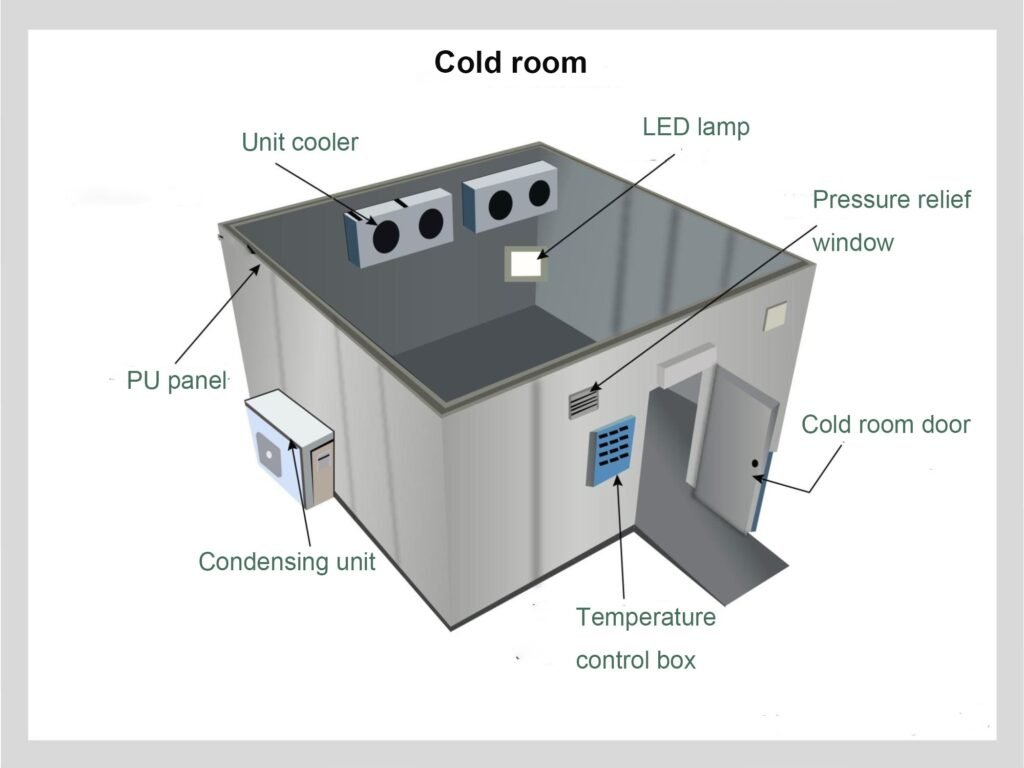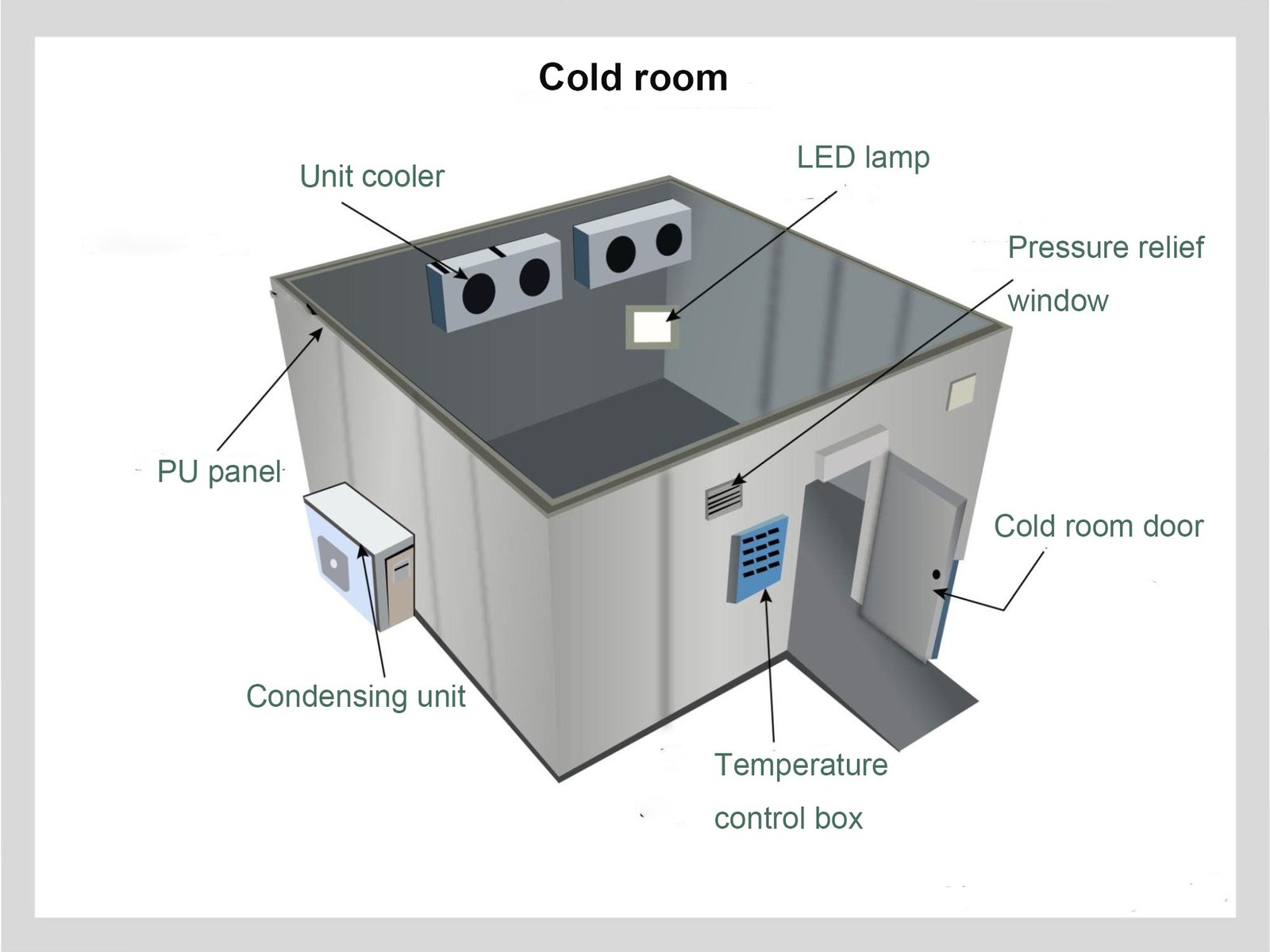In modern science education, providing students with hands-on experience is vital for understanding complex concepts and fostering a deep appreciation for research. Cold room labs are an essential part of this experience, offering a controlled environment for conducting temperature-sensitive experiments. Whether in high school or university, cold room labs can elevate the educational experience by allowing students to work with biological samples, conduct environmental studies, and explore the intricacies of temperature-controlled research.
Introduction: The Growing Need for Cold Room Labs in Education
As the world of science evolves, so does the technology and tools that aid in research and learning. Cold room labs, traditionally associated with industries like biotechnology and pharmaceuticals, are now becoming increasingly valuable in educational settings. These labs offer students a unique opportunity to engage with real-world scientific practices, especially in fields like biology, chemistry, and environmental science. But how exactly do cold room labs enhance the educational experience?
Applications of Cold Room Labs in Educational Settings

Cold room labs in educational institutions are used for a variety of purposes that contribute to different fields of study. Below are some key ways in which they are integrated into science curricula:
- Biological Studies:
- Cold room labs are crucial for preserving biological specimens such as enzymes, DNA samples, and even living organisms. In high school and university biology labs, students often use cold storage to investigate how temperature affects biological reactions or preservation techniques.
- Example: A common experiment might involve the study of enzyme activity at various temperatures, requiring precise control of the lab environment.
- Environmental Science:
- Environmental science students often need to study soil samples, water quality, and air samples under controlled conditions. Cold room labs ensure that these sensitive materials are preserved and studied at the correct temperature.
- Example: Research on climate change might involve storing samples of ice cores, which are kept in cold room labs to preserve their integrity.
- Chemistry and Chemical Engineering:
- Temperature is a critical variable in many chemical reactions. Cold room labs allow chemistry students to safely conduct experiments involving temperature-sensitive reactions, such as studying the rate of reaction at different temperatures.
- Example: A reaction between chemicals that is exothermic may require a cold environment to maintain safety and control.
- Microbiology:
- Cold room labs are integral for microbiology courses where students study microbial growth and preservation. Cold temperatures can slow microbial activity and can be essential in preserving cultures over long periods.
- Example: Students may use cold room labs to observe bacterial growth at different temperatures or to store bacterial cultures in a dormant state.
Designing Cold Room Labs for Educational Institutions
The design and setup of cold room labs in educational institutions must meet both practical and safety requirements. Below are some considerations to keep in mind when designing these spaces:
| Factor | Consideration | Impact on Functionality |
|---|---|---|
| Size and Capacity | The cold room should be large enough to accommodate the anticipated volume of samples, equipment, and experiments. | Ensures there is sufficient space for students to conduct experiments while maintaining temperature control. |
| Temperature Control | Precise temperature regulation (from -20°C to -80°C) is necessary for a variety of educational purposes. | Maintains the integrity of temperature-sensitive experiments. |
| Energy Efficiency | Energy-efficient refrigeration systems can help lower operating costs. | Promotes sustainability and reduces long-term energy expenses. |
| Safety Features | Emergency alarms, backup power systems, and security measures. | Ensures that students are safe while using the cold room lab and that valuable samples are protected. |
Challenges in Implementing Cold Room Labs in Schools and Universities
While cold room labs provide incredible educational value, setting up and maintaining these labs can present challenges, especially for educational institutions with limited budgets. Some of the common challenges include:
- High Initial Costs:
- The purchase and installation of cold room labs can be expensive. However, this investment is essential for providing students with the best learning environment and exposure to real-world scientific equipment.
- Energy Consumption:
- Cold rooms consume a significant amount of energy, which can become a financial burden for educational institutions. Implementing energy-efficient cooling systems, as mentioned earlier, can alleviate some of these costs.
- Maintenance and Upkeep:
- Regular maintenance of cold room labs is crucial to ensure the equipment functions optimally. Institutions must budget for routine servicing and any necessary repairs to avoid downtime or temperature instability.
How Cold Room Labs Benefit Science Education
The integration of cold room labs into educational curricula provides students with a hands-on learning experience that is often unavailable in traditional classrooms. Here’s how cold room labs benefit students:
- Exposure to Real-World Scientific Practices: Cold room labs simulate environments that students will encounter in professional scientific research. This exposure helps prepare them for careers in research, biotechnology, pharmaceuticals, and environmental science.
- Improved Understanding of Temperature-Dependent Processes: By working with cold rooms, students learn about the effects of temperature on various scientific processes, such as the preservation of biological samples and chemical reactions.
- Enhanced Critical Thinking: Cold room labs foster problem-solving and critical thinking skills. Students must monitor and adjust conditions to ensure successful experiments, helping them develop practical research skills.
External Resources and Further Reading
For additional insights into setting up and optimizing cold room labs for educational purposes, you can explore the following resources:
- Cold Room Design and Implementation for Educational Institutions – Learn about energy-efficient design and the importance of cold rooms in academic settings.
- The Role of Cold Rooms in Academic Research – Explore how academic research institutions are using cold storage solutions.
Conclusion: The Future of Cold Room Labs in Education
Cold room labs offer educational institutions the ability to provide hands-on, practical science education, making abstract scientific concepts more tangible for students. As demand for real-world, industry-standard tools in education continues to grow, cold room labs will play an increasingly important role in shaping the next generation of scientists, researchers, and innovators. To learn more about cold room lab options for educational use, visit Top Cold Room’s product catalog.
By implementing cold room labs in schools and universities, we are not just investing in infrastructure but investing in the future of science education.



